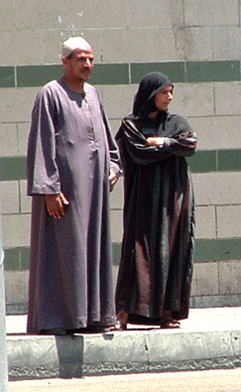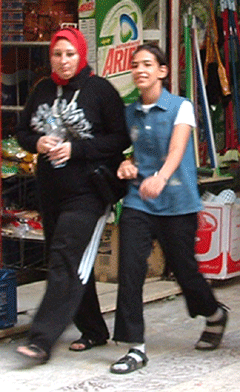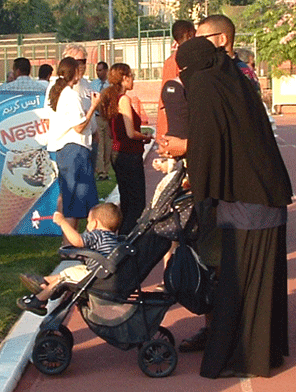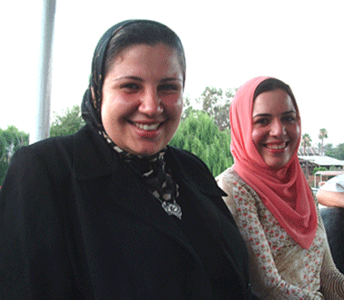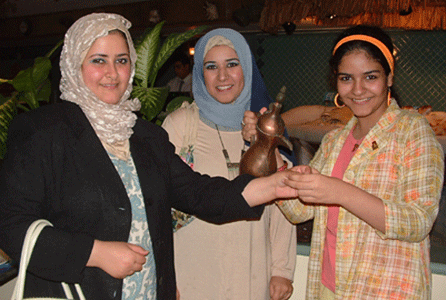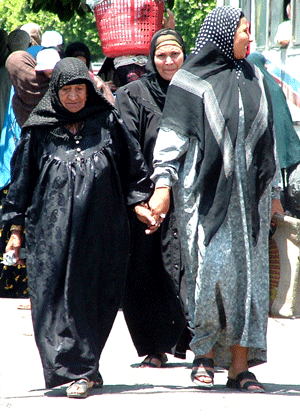
Tales of a 21st Century Gypsy
July 27, 2004 Women.
One of the things that baffled me in Cairo Ė and that always seems to interest my western friends Ė is the question of women and their clothing. Or more particularly, headscarves, veils, how they dress, how I dressed.
In the middle of the twentieth century Ė Iím being deliberately vague because my history is imprecise Ė Egyptian women threw off the veils, got educated, went to work, and generally took a position of greater equality than they had had in the past. In the past ten or twenty years they have continued to go to university, get an education, and hold jobs of all sorts, but they have returned to the veils and the headscarves. I donít understand it.
I looked at women all the time to try to make sense of what they wore. Whenever I could, without being rude, I photographed them as well Ė often that meant shooting into a crowd with my camera fully zoomed, hoping that no one would realize I was taking a picture of that one woman, not the whole street. Sometimes I captured the image I wanted, though not always.
From my ignorant outside perspective, the women seemed to be of many different types. I worked with a lot of professional women who wore headscarves. They were of all ages. They usually wore pants or long skirts and loose long-sleeved shirts that came down past their hips, with headscarves wrapped around their necks and sometimes their shoulders. The scarves were of all colors and patterns. Most were somewhat muted, but I saw plenty in glowing pinks, oranges, and blues. They wore no make-up, and to western eyes had no style or flair at all. In the Arab world, Egyptian world are known for being rather heavy, and many of these women fully lived up to that reputation. Very few women of working age were without headscarves; even those who were wore long-sleeves.
I talked to one of the women in the office about why she wore a headscarf. Sheís a young woman, perhaps 30, unmarried. She said she had begun wearing it a couple of years ago. It was her decision, and it was a sacrifice she was making. I donít quite know why she was making the sacrifice, but I suppose it was a religious statement, perhaps like fasting for Lent. Fasting for Yom Kippur seems different Ė that is a personal act, to come to grips with what is inside oneself, not to show a god your commitment to your faith.
I met an older woman who had been married to an Egyptian and had lived in Cairo much of her life. She was thoroughly dismayed by the veiled young women, and she said that the older upper class Egyptians who had been her husbandís friends were equally dismayed. They had fought for freedom from these veils, and here these young women were putting them back on voluntarily.
